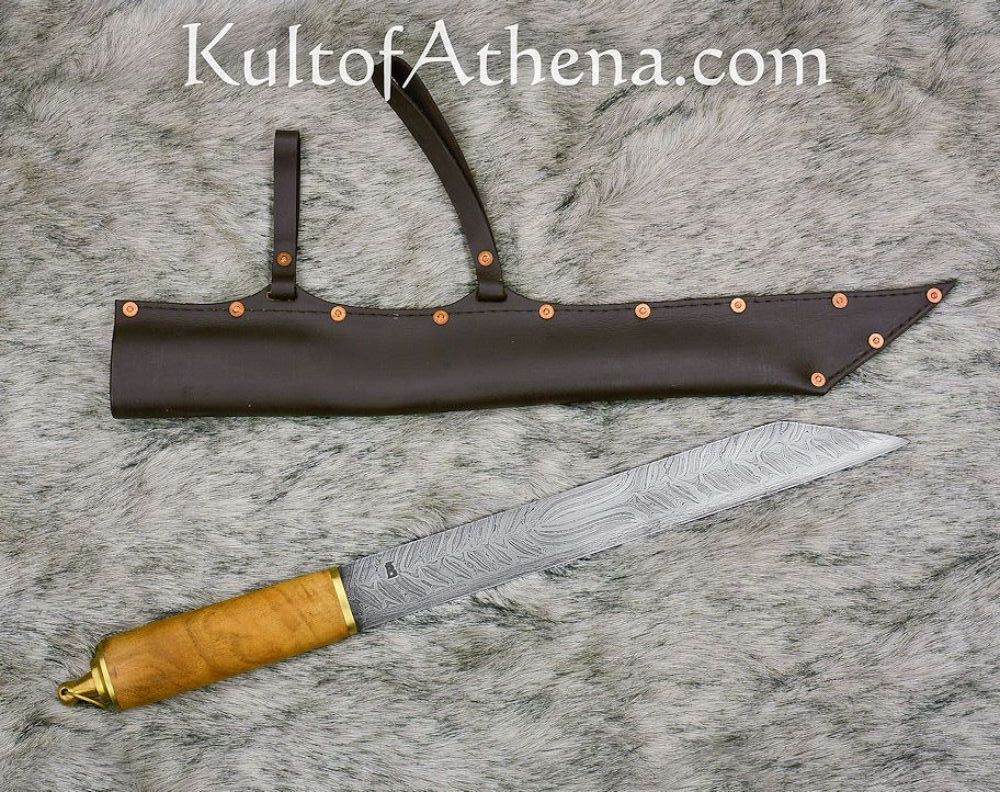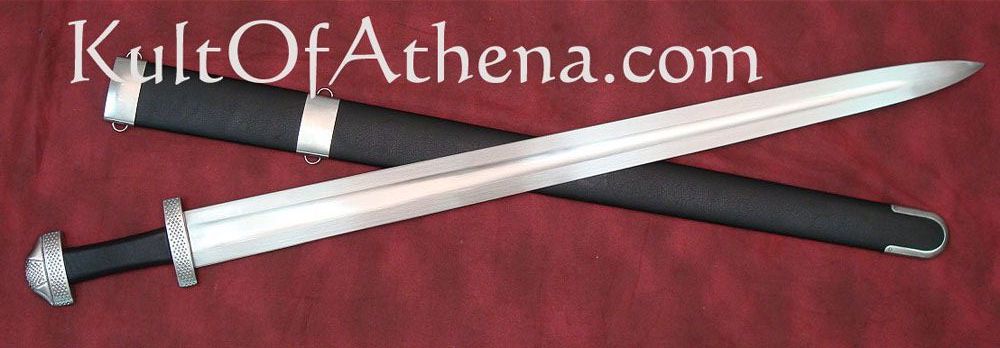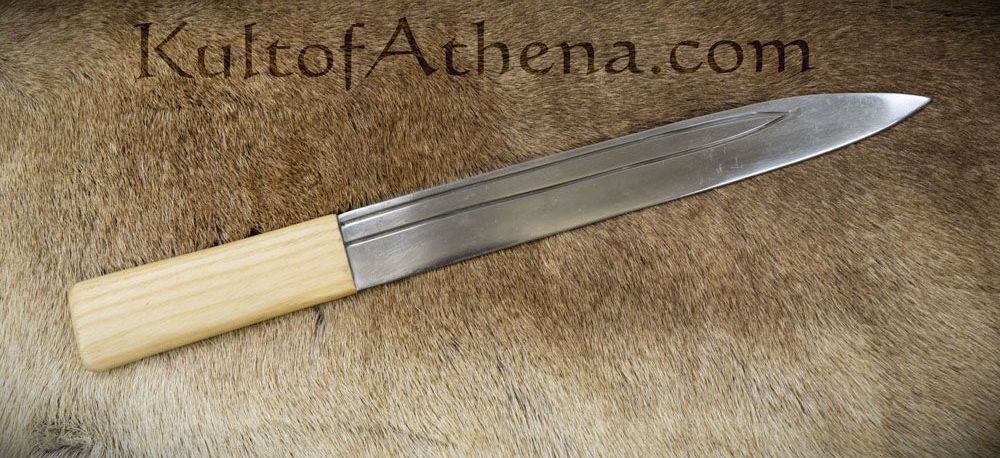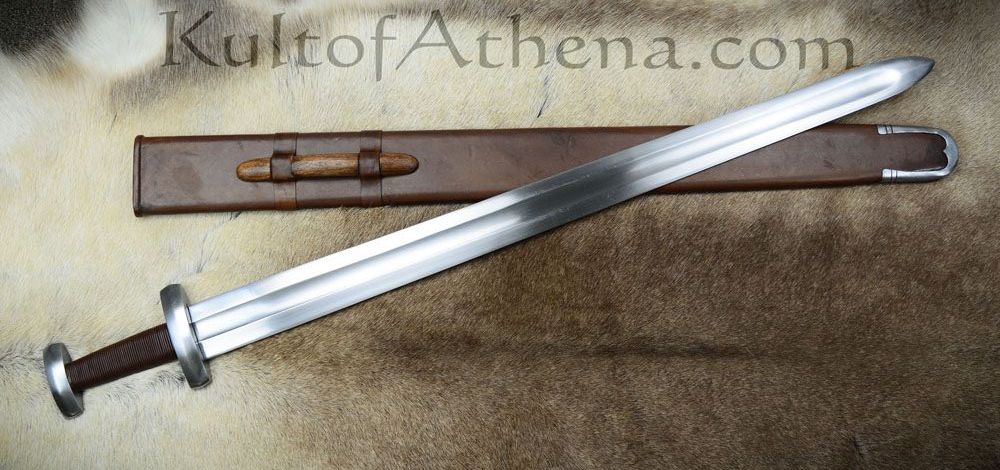As fierce warriors, the Vikings inspire many modern collectors to add a weapon to their closets. Axes, swords, langseax, spears, or seax are the most common choices.
No hard rules of course, but in general swords were in the possession of those with prestige, power, or wealth and any professional warriors, champions, and bodyguards who were part of their personal professional warrior retinues. Any of those mentioned may have also carried a well-embellished or particularly well-crafted langseax in lieu of a sword, but seax of such blade length and craftsmanship were essentially swords anyway.
The more common folk of Viking society would have used spears or axe with shields as their primary tools for war/raid/defense. A smaller seax was their secondary weapon but has a pull that appeals to many today.
Diving into the Seax and its comparisons with the Viking sword can give more guidance on which item to add to your collection (or where to start).
The Seax
It is a single-edged, dagger or even a short sword that was commonly used by Germanic tribes and their related cultures such as the Saxons and the Vikings. The seax can be grouped as two types; the utility seax and the langseax. The langseax – or “Long Seax” had a …. longer blade. As a single edged weapon, the blade shape allows for powerful chopping and slashing motions and deep puncturing thrusts, making the seax a highly effective close-quarters weapon. The versatile seax could be crafted with long, sword-length blades suitable for war, raiding, and self-defense.
This is one of our famous seax the Balaur Arms – Pattern-Welded Viking Seax, it was made in collaboration with Arn Forge, and its handcrafted blade with its vibrantly banded patterning was made with traditional pattern-welded bladesmithing techniques.

Types of Seax
- Utility seax, it is also known as a “working seax” or “craftsman’s seax,” was primarily used as a tool for everyday tasks such as woodworking, hunting, and general utility work. It had a shorter blade than a typical combat seax, ranging from 3-6 inches in length, and was often wider and thicker as well. The blade was typically straight or had only a slight curve, with a relatively blunt tip for safety when using it for carving or other fine work. The handle of a utility seax was usually made of a sturdy material such as bone or wood.
This Vittfarnas Forge – Dane Seax is an everyday seax for general chores and self-defense alike. The blade of the Dane seax is forged from robust 5160 high carbon steel and its curved tip lends itself well to cutting rope, sinew and other materials. It is durably riveted into a hilt with a polished burl wood grip surmounted by a bolster and pommel cap of brass.

- Langseax or Long seax, the langseax was designed as a weapon for war had a longer blade than a utility seax, ranging from 18-30 inches in length. The blade was typically sharpened on one side only, with a sharp point for thrusting. The handle of a combat seax was designed for a secure grip, and could feature a guard or pommel to prevent the user’s hand from sliding off the handle during combat.
This Anglo-Saxon Long Seax – Stage Combat Version was handcrafted in the Czech Republic by Wulflund. This long seax (langseax) was strongly constructed so that it could be used for a heavy amount of sport, stage and reenactment combat. The guard and pommel were welded to a thick tang and the tang was given a large peen to give the entirety of the hilt a very robust construction.

The Viking Sword
This weapon was often a double-edged sword that was popularized during the Viking Age but a significant number of single-edged swords also existed. The blade of a Viking sword ranges from 25 to 30 inches in length, with a straight profile. The Viking sword was a highly versatile weapon, capable of delivering powerful thrusts, cutting strikes, and even agile defensive maneuvers. This made it a popular choice among Viking warriors and other European combatants during the Middle Ages.
This is one of our famous Viking Swords the Hanwei Tinker 9th Century Viking Sword it was inspired by historical examples from the early 9th Century, most notably finds in the area around Trondheim, Norway, where the circular indentation hilt decoration was popular.

Difference between Seax, Langseax and Viking Sword
Seax
- Seax was a short
- Single-edged sword or dagger
- Effective in their own way

Viking Sword
- Viking sword was long
- Double or single-edged sword with a straight profile
- Effective in their own way




Leave a Reply